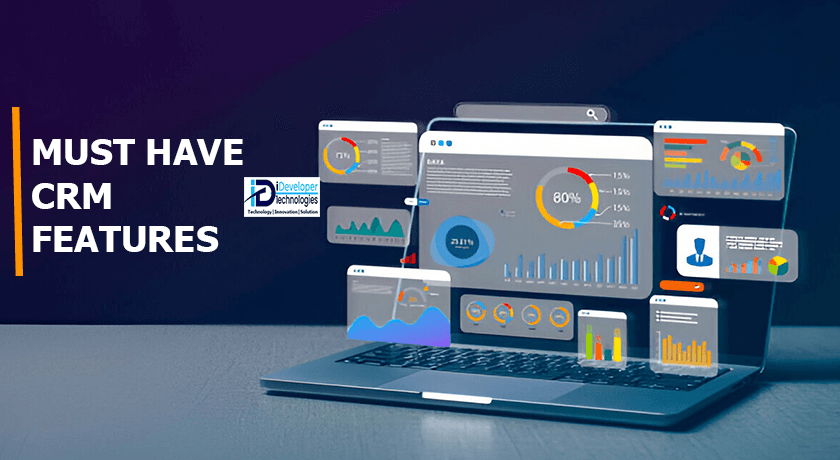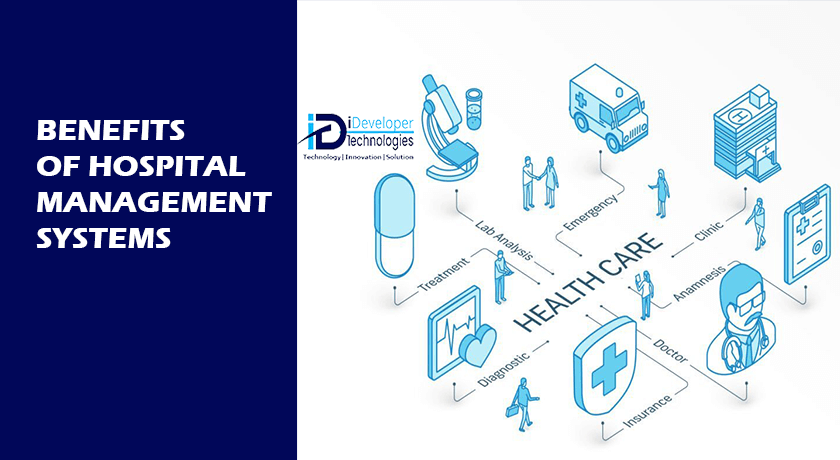Hospital management system have long been one of the most important solutions to implement. Great…

Top 10 CRM Software Features for Your Business
Customer relationship management (CRM) offers organizations a comprehensive understanding of their clientele, enabling them to enhance customer service.
This is achieved through CRM Software Features functionalities, that aggregate the latest customer information and deliver insights that boost the productivity and efficiency of teams in sales, marketing, service, and commerce. As CRM technology has evolved, the array of available features has expanded, which is beneficial for businesses aiming to improve customer experiences.
However, it can be challenging to determine which CRM tools best meet the unique requirements of an organization. To assist with this, we have compiled a list of essential CRM Software Features.
Top CRM Software Features to look for
1. Contact management CRM software Features
Managing contacts is a fundamental aspect of CRM Software Features that enables businesses to retrieve and structure vital information regarding their existing and prospective clients. This encompasses online submitted email addresses, phone numbers collected during meetings, as well as online presence through websites and social media profiles. Additionally, it serves as a mechanism to monitor leads as they transition into customers and beyond. Contact management also offers features such as calendar alerts and follow-up reminders, along with the capability for team members to access comprehensive notes on customer interactions with the service team. By having a thorough understanding of current information and activities, teams gain enhanced context for each customer.
2. CRM Software AI Capabilities features
The advent of AI-driven CRM systems has transformed how various departments within organizations engage with customers, enhancing efficiency and delivering valuable business insights. AI in CRM offers numerous avenues to boost team productivity. Predictive AI analyzes historical data to forecast future trends, assisting in pinpointing which deals are likely to succeed and which may be at risk, as well as determining the most effective channels and messaging for marketing efforts. Additionally, generative AI leverages customer information to produce personalized sales emails, create knowledge articles for support teams, generate product descriptions in various languages, and design marketing campaigns tailored to specific demographics, among other applications.
3. CRM Software Analytics and Reporting Feature
To effectively utilize customer data, it is essential to first comprehend it. CRM reports and dashboards offer a comprehensive overview of key information and analytics, highlighting what is necessary to enhance customer relationships and increase sales. The ability to customize these tools is another valuable feature of CRM systems. Each team or individual employee can select the metrics that matter most to them and tailor their reports and dashboards accordingly.
CRM analytics can provide insights into customer preferences, shifts in buying behavior, potential challenges, and opportunities for upselling. Additionally, CRMs deliver data visualizations that distinctly categorize customers and evaluate their interactions with your business.
4. Cloud/Hosted Capabilities
Contemporary customer relationship management systems are frequently referred to as cloud-based CRMs due to their operation on remote servers. This contrasts with on-premise CRMs that keep their data on local hardware. Cloud-based CRM exemplifies SaaS (software as a service), allowing users to access it remotely without hassle. Additionally, it lowers both initial and ongoing expenses, as the CRM provider handles all setup, updates, and security oversight.
5. Mobile App Support
One significant advantage of utilizing a cloud-based CRM Software Features, is that employees can access customer information from any location, whether they are in the office, traveling, or working from home. Mobile CRM Software Features, enables users to retrieve insights, data, and customer profiles from various devices, such as smartphones, tablets, or laptops. Furthermore, if your CRM includes an integrated collaboration tool like Slack, all team members can view their data seamlessly within their workflow, without needing to exit the application.
6. Automation & Workflow Management
Organizations that implement automation for repetitive tasks not only enhance productivity but also allow their employees to concentrate on more valuable projects. Automation enables CRMs to execute specific actions in response to certain triggers. For instance, CRMs can issue app notifications when a customer views a product without making a purchase or follow up on an unanswered email after a set period. The most effective CRMs incorporate automation that feels personal, delivering tailored messages or check-ins at regular intervals. CRMs assist businesses in developing workflows and automating tasks that propel teams forward. For example, they can send weekly reminders to staff to complete tasks such as updating status sheets or customer notes. Additionally, they can facilitate submission workflows for employees to request assistance from other teams, such as IT support or legal reviews.
7. Collaboration Tools
When team members operate from a unified source of truth, their collaboration and communication improve significantly. Platforms such as Slack enhance this process by integrating with your CRM, enabling smooth teamwork, efficient searching, summarization, task automation, and workflow creation. Additionally, with advancements in conversational AI, employees can interact with their CRM using the same language they would with a colleague, allowing them to pose questions and instruct the system to perform actions.
8. Scalability and Customization
Customer Relationship Management systems offer a diverse array of functionalities. Selecting the appropriate CRM enables your organization to choose the features that are most relevant, with the adaptability to modify these features as your requirements change and expand. This principle also extends to the number of users accessing the CRM. It is crucial to opt for a CRM that allows for the addition of user licenses as your business grows, rather than restricting you to a fixed number. While you may currently seek the ideal CRM software solution for a small business, ensure that it can evolve alongside your changing needs.
9. Quotation & Order Management
Customer Relationship Management systems assist companies in maintaining an up-to-date inventory of their products while ensuring uniformity in quotes throughout various interactions. CRMs equipped with these capabilities support sellers in navigating the selling process and managing configuration workflows. Additionally, they can enhance deal value by suggesting suitable upgrades and add-ons, while simultaneously minimizing customer churn through automated renewal quotes and notifications for midterm changes to current clients.
10. Omni-channel Capabilities
Customers now expect a consistent experience with a brand across multiple channels, including phone, chat, social media, and email. A CRM that offers omni-channel support, such as Service Cloud, equips customer representatives with a holistic view of a customer’s history across all platforms. This enables service agents to leverage insights from previous purchases and service interactions to provide a more informed and enhanced experience, as well as to recognize potential upsell opportunities.
11. Integration
When customer data is shared among teams, businesses can enhance customer experiences. This principle holds true for both external applications and those utilized within your CRM. Integration tools such as MuleSoft facilitate seamless data transfer between systems, allowing team members to access insights from CRM, ERP software solutions, HR, accounting, and other applications. By integrating these tools with a data platform, information from diverse sources can be unified into a comprehensive view of your customer, accessible to all teams.

